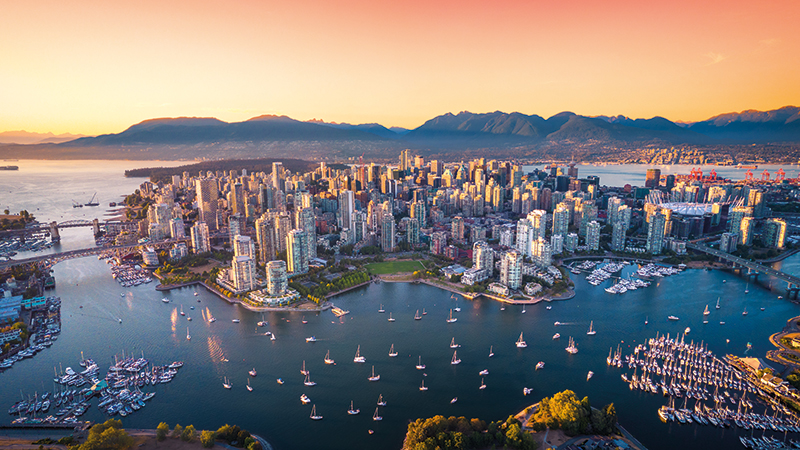By Selina Lee-Andersen
Since the introduction of Canada’s first building energy code in 1997, there has been an increasing emphasis on improving energy efficiency in buildings.
In its Early Estimate of National Emissions released in September 2023, the Canadian Climate Institute found that emissions from the Canadian building sector increased from 84 mega tonnes of carbon dioxide equivalent (Mt CO2e) in 2005 to 92 Mt CO2e in 2022 (an increase from 11 to 13.5 per cent of Canada’s overall emissions). If building materials and construction are factored in, the Canada Green Building Council pegs greenhouse gas (GHG) emissions from the building sector closer to 30 per cent, making it one of Canada’s top emitting industries. Globally, the World Green Building Council estimates that buildings account for approximately 39 per cent of the world’s emissions. In response, there has been a proliferation of regulatory initiatives to improve the energy efficiency of buildings and support the transition of the country’s building stock to net zero.
The road to 2030
Given the significant contribution of emissions from the building sector, the federal government has set its sights on implementing programs to reduce emissions from buildings. In July 2022, the federal government released its 2030 Emissions Reduction Plan: Clean Air, Strong Economy plan (2030 Emissions Reduction Plan), which provides a sector-by-sector roadmap for Canada to reduce its emissions to 40 per cent below 2005 levels by 2030 and to reach net zero emissions by 2050. Under the plan, direct emissions from residential, commercial and institutional buildings will be reduced by making new buildings “net zero energy ready” through an updated building code. For existing buildings, the federal government is developing a retrofit code along with an energy labeling scheme to support retrofits and advanced efficiency standards for new heating equipment. The 2030 Emissions Reduction Plan also focuses on the need for greater energy efficiency in buildings located in Indigenous communities and opportunities to incorporate traditional Indigenous knowledge into building designs. To facilitate these initiatives, the federal government committed $150 million in its 2022 budget to develop the Canada Green Buildings Strategy, which will enable the development of regulatory standards to support the transition to less carbon intensive heating systems, as well as the establishment of the Low Carbon Building Materials Innovation Hub and Net Zero Building Code Acceleration Fund.
The essential role of building energy codes
Since the introduction of Canada’s first building energy code in 1997, there has been an increasing emphasis on improving energy efficiency in buildings. According to Efficiency Canada, building codes affect up to 68 per cent of energy use in buildings and up to 81 per cent of energy use in residential houses. With energy use in buildings expected to increase, building energy codes are an essential tool in decarbonizing the building sector. Building energy codes, which are a subset of building codes, set minimum energy efficiency standards for a range of building types and seek to improve the energy performance of building components that directly affect energy use, including the building envelope, hot water systems, lighting, and heating, cooling and ventilation systems. In recent years, net zero energy buildings have become more widespread. A net zero energy building (NZE) is a building with significantly reduced energy needs and which produces sufficient renewable energy on-site (or near-site) to meet its own demand. A net zero energy ready (NZEr) building is designed and constructed in the same way as an NZE building, but an NZEr building does not yet have on- or near-site renewable energy systems in place to meet its remaining energy needs. A building constructed to an NZEr standard will be able to achieve net zero emissions without any further changes to the building or its equipment.
In March 2022, the National Research Council introduced Canada’s first national NZEr model building codes. Known as the 2020 Model Codes, the updated codes take a tiered approach to reducing energy waste in buildings and call for all new buildings to be built to NZEr standards by 2030. The 2020 Model Codes include the National Energy Code for Buildings (NECB) for large buildings and the National Building Code (NBC) for low-rise residential buildings. Existing buildings will be covered under the Alterations to Existing Buildings Code, which is expected to be published by the end of 2024. Under the Construction Codes Reconciliation Agreement, provinces and territories agreed to harmonize their building codes with national regulations and are required to implement the 2020 Model Codes within 24 months of their release (by March 31, 2024).
To date, B.C. is the only province that has committed to its own NZEr code—the Energy Step Code introduced in 2017—which require new buildings to be net zero energy ready by 2032. Similar to B.C.’s Energy Step Code, the NECB includes four energy performance tiers, where the highest tier is consistent with an NZEr standard. While building codes have traditionally set minimum standards for construction, tiered building codes take a different approach to energy efficiency by offering a progressive series of performance-based targets that start with a base building code. The energy performance of the building increases as it moves through incrementally more stringent tiers towards the NZEr standard. Tiered codes provide flexibility by enabling provinces and municipalities to choose the appropriate tier that will help achieve their emission reduction objectives.
Next stop: Zero carbon buildings
The next evolution of green buildings is the zero carbon building (also referred to as a zero emission building). A zero carbon building is a highly energy-efficient building that minimizes GHG emissions from building materials and operations, and which uses energy from renewable sources for any remaining energy needs. The European Union (EU) is one of the first jurisdictions to mandate zero emission buildings. Under the EU Energy Performance of Buildings Directive, all new publicly owned, occupied or operated buildings must be zero emission from January 1, 2026 and all other new buildings must be zero emission by January 1, 2028. All existing buildings in the EU must be zero emission by 2050. The Canada Green Building Council’s (CAGBC) Zero Carbon Building (ZCB) standards are among the world’s first zero carbon building standards. The ZCB standards include a performance standard and a design standard, which set out the parameters for low-carbon design and operational performance for all types of buildings.
Municipal initiatives
At the municipal level, both Toronto and Vancouver have implemented requirements to ensure that buildings are sustainable. Toronto’s Green Standard was first introduced in 2006 as a voluntary standard for new development and establishes sustainable design requirements for both new private and city-owned developments. The Green Standard consists of four performance tiers with supporting guidelines that promote sustainable site and building design: tier 1 is required through the planning approval process; and tiers 2 to 4 are higher level voluntary standards associated with financial incentives and are verified post-construction.
The City of Vancouver has plans to transition to zero-emissions buildings in all new construction by 2030. This will be achieved by setting limits on emissions and energy use in new buildings, and reducing these limits over time. The city’s Zero Emissions Buildings Plan establishes specific targets and actions to achieve zero emissions in all new buildings by 2030. The city has also developed Embodied Carbon Guidelines to reduce embodied emissions by 40 per cent by 2030 as part of the city’s climate emergency declaration. Embodied carbon emissions occur when building materials are produced, shipped, assembled, replaced, and demolished over a building’s life span. Proponents must comply with the embodied carbon requirements in respect of new building permit applications made on or after October 1, 2023.
The need for a more climate-resilient building sector
According to the Insurance Bureau of Canada, insured damage for severe weather events reached $3.1 billion in 2022, which ranks as the third worst year for insured losses in Canadian history. Despite recent updates to the 2020 Model Codes, the impacts of more severe climate events (such as floods, wildfires and windstorms) on buildings are not addressed in the latest version of the model codes. The reality is that building code regulations across the country are not sufficient to meet the challenges of climate change, often because the data they rely on is outdated or of poor quality. Until now, federal and provincial governments have been focused on energy efficiency, which has resulted in the issue of climate-resilient buildings being placed on the back burner. Discussions on the 2025 edition of the model codes are already underway, so there is an opportunity for the NRC to address climate resiliency in building design and construction. However, given the time lag in adopting model building codes, it would be closer to 2030 before an updated model code is adopted by the provinces and territories.
Taking the first steps
The decarbonization of Canada’s building sector will require a fundamental shift in how buildings are designed, constructed and retrofitted. This process will create new opportunities along the supply chain from the promotion of low-carbon building materials and technological innovations, to increased investment and new labour skills development. The 2020 Model Codes are expected to reduce building emissions to 53 Mt CO2e by 2030 (a 37 per cent reduction from 2005 levels), and represent the first step towards the transformation of Canada’s built environment on the road to net zero. Regulators are also using other planning tools to complement building energy codes, such as the incorporation of electric vehicle infrastructure and low-carbon technologies into building design requirements. To ensure that building infrastructure across Canada is able to withstand the impacts of more severe weather events, the next natural step would be to incorporate elements of climate resilience and adaptation into building design and construction requirements.
Selina Lee-Andersen, a partner with Miller Thomson LLP, based in Vancouver, is an environmental lawyer who specializes in climate change law, where she advises on carbon offsets, emissions trading and clean tech.
[This article originally appeared in the January/February 2024 edition of ReNew Canada]
Featured image: The City of Vancouver has plans to transition to zero-emissions buildings in all new construction by 2030. (Getty Images)












